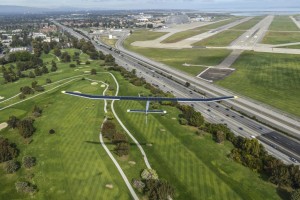For those interested in positioning themselves to catch a glimpse, there is a real-time map of the plane's progress on the company's landing page. Borschberg said the plane will be flying at about 3,000 feet, which could make it difficult to see. But it's not exactly inconspicuous. There are very few objects in the sky with the breadth of a jumbo jet that fly an average of 43 mph.
"It’s quite a fuselage," Borschberg said. "If you see it once you will not forget it. It has a different shape than a normal airplane.”
The plane is able to fly at night by taking in more than 1 horsepower (HP) of light power for each square meter of surface at midday. With 200 square meters of panels, the plane's engines get an average of 8 HP over 24 hours. That is roughly the amount of power that was available to the Wright brothers on their first flight in 1903.
The company said that by making the propulsion chain as efficient as possible, they've been able to achieve the nighttime flying breakthrough.
Borschberg said it was a natural decision to choose the Bay Area and, in particular, Silicon Valley's Moffett Field for the plane's initial cross-country voyage.
“For us it’s the heart of the world technology. From that perspective it’s very symbolic," said Borschberg. "And to be at the place owned by NASA was also very important for us. We have been so much inspired by all the pioneers who developed aviation, developed space travel. For us it was, in a way, paying tribute to this.”
The Solar Impulse is scheduled to take off from Moffett Field on May 1 for Phoenix, the first leg of its journey. The plane will be on the ground for several days at each stop along the way. The final destination will be New York City's John F. Kennedy International Airport in June.
